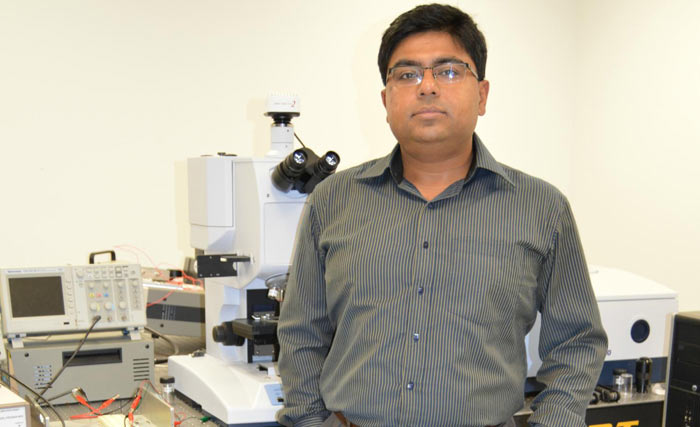Researchers at the University of Central NanoScience Technology Centre and the College of Optics and Photonics (CREOL) have developed a way to produce the "world's first full-colour, flexible thin-film reflective display," reports Phys.org. This display is likened to skin due to its flexibility and stretchability. It is also remarkably thin, at "about few microns thick".

Professor Debashis Chanda
Professor Debashis Chanda led the research team at Florida and explained how the inspiration behind the development came from nature. While the displays on our current array of devices usually include a light source, filters and glass plates, some animals have skin that can display multicoloured designs without such components. Chanda referred to an Octopus which can "create colour on the skin itself covering a complex body contour, and it's stretchable and flexible".
The research team developed a display which uses a thin liquid crystal layer sandwiched over a metallic nanostructure which is "shaped like a microscopic egg carton that absorbs some light wavelengths and reflects others". Colours displayed by the material are controlled using a voltage applied to the liquid crystal layer of the sandwich. The colours displayed are said to be fully tuneable. Previous research using reflected light offered only a very limited colour palette, reports Phys.org.

(a–d) Microscope images of a singular Afghan Girl image as a function of applied electric field. Nanostructure periods are chosen so colours match the original photograph at colour tuning saturation, 10 V μm−1. Scale bars (a–d), 100 μm. Defects due to fabrication errors (missing pixels) have been replaced by nearest neighbours.
The flexibility of the new display will be a boon to its applications and device development thinks Prof Chanda. "Your camouflage, your clothing, your fashion items - all of that could change," Chanda predicted "Why would I need 50 shirts in my closet if I could change the colour and pattern?" The development could also be used for computer, wearable and other gadget displays.
This new flexible super thin display is said to be able to be manufactured simply and inexpensively. Nano-imprinting techniques can produce the reflective nanostructured surface over a large area - meaning large flexible full-colour displays won't form a barrier for the emerging technology adoption.
Further reference: Nature Communications













